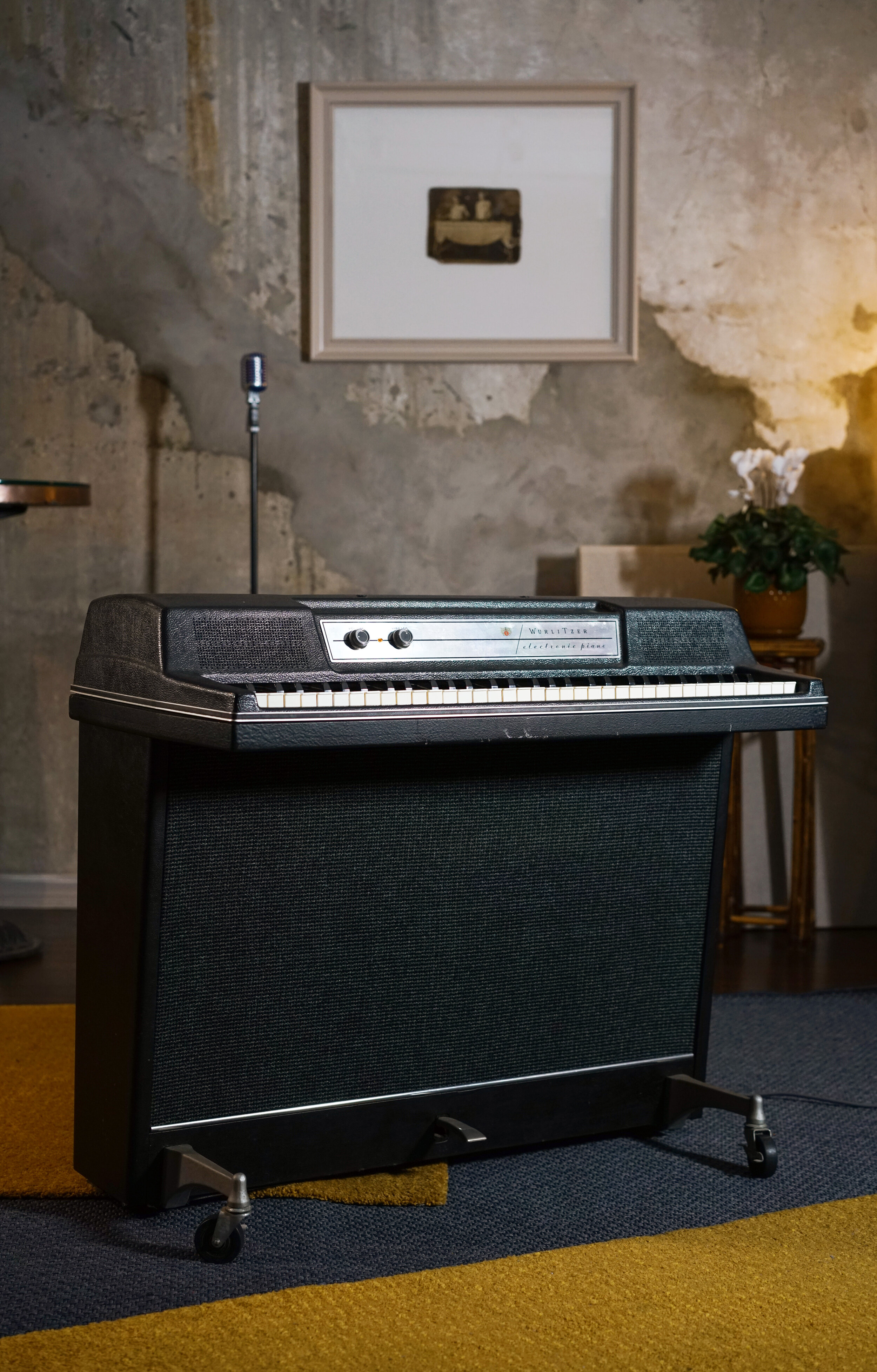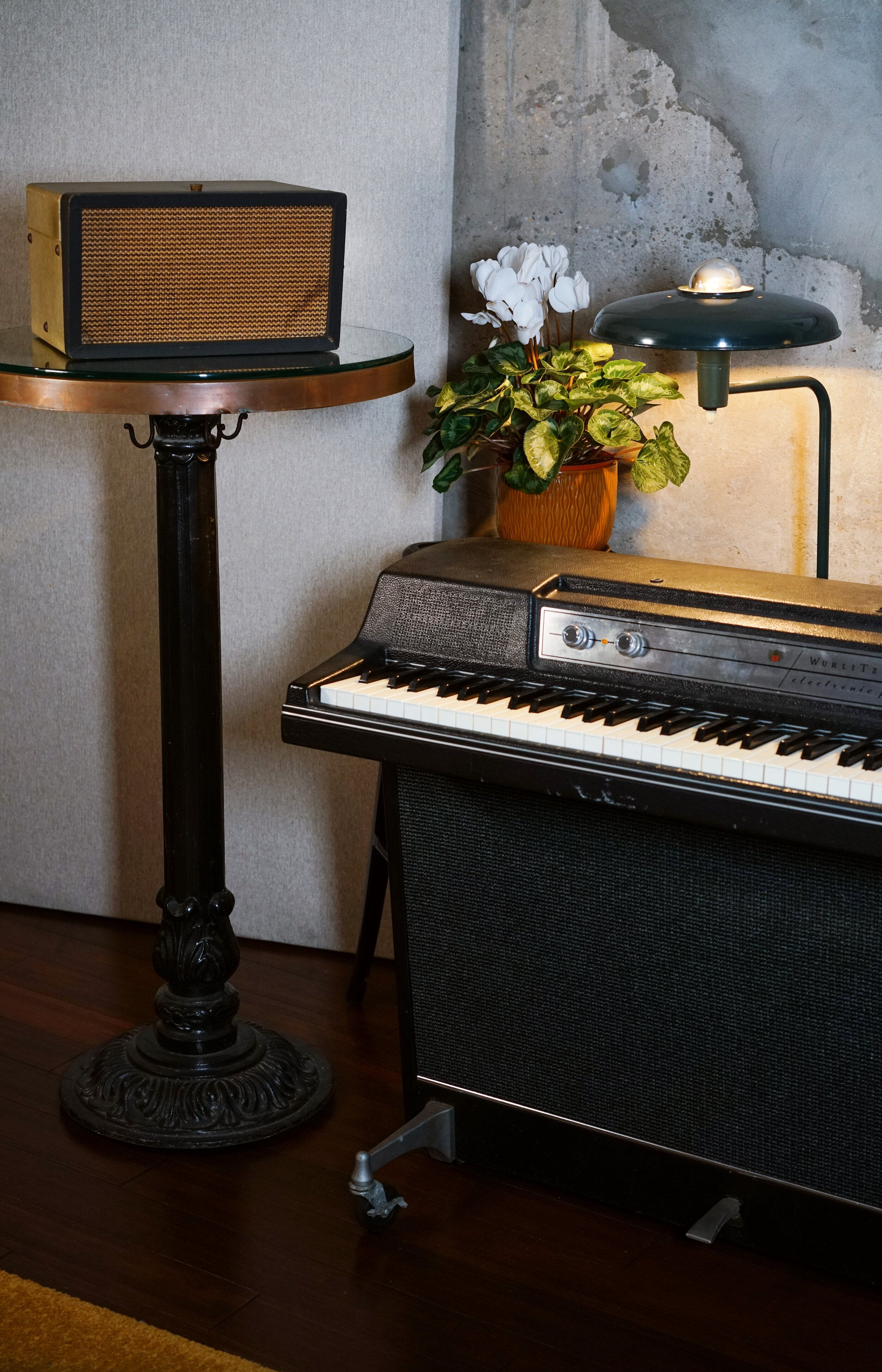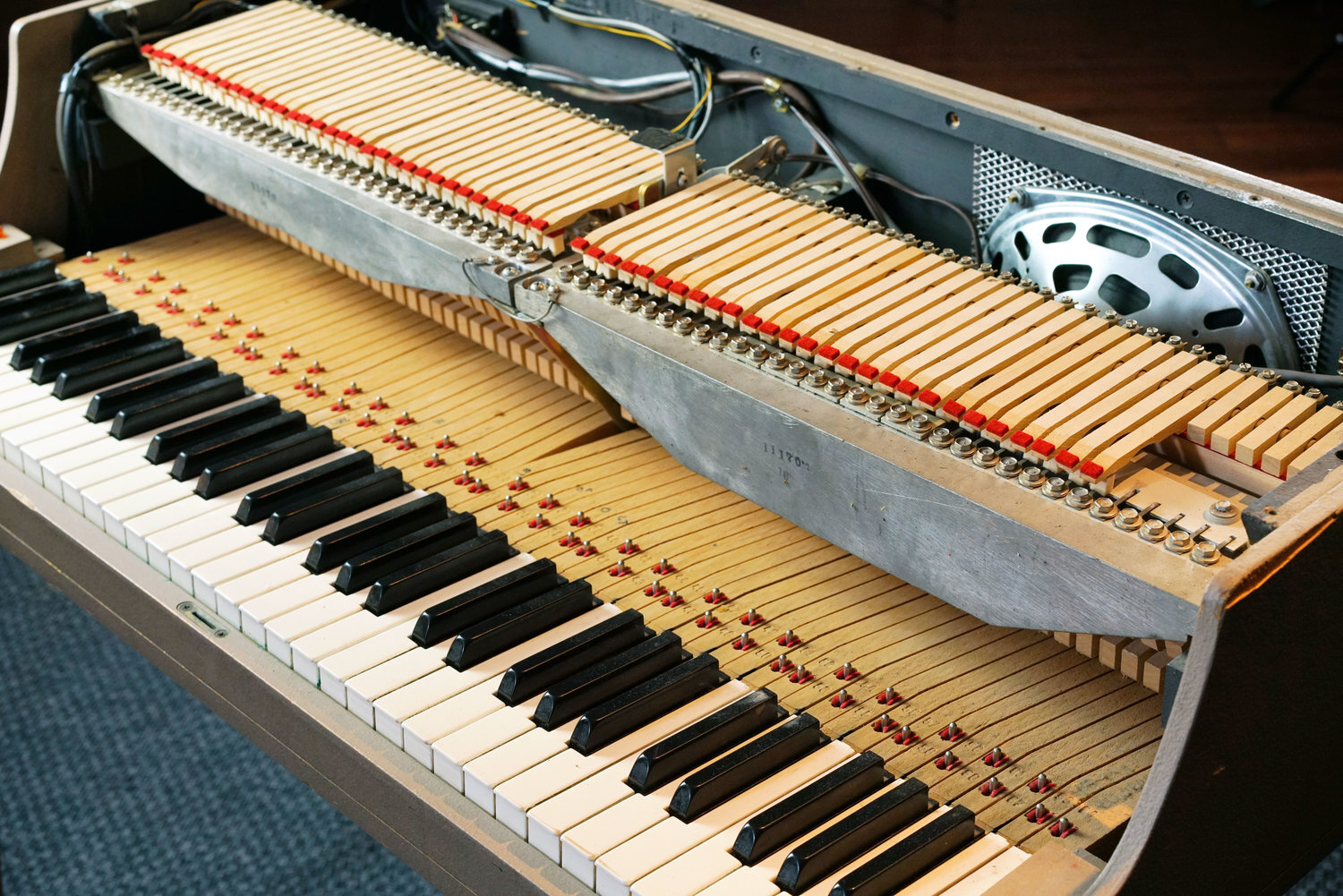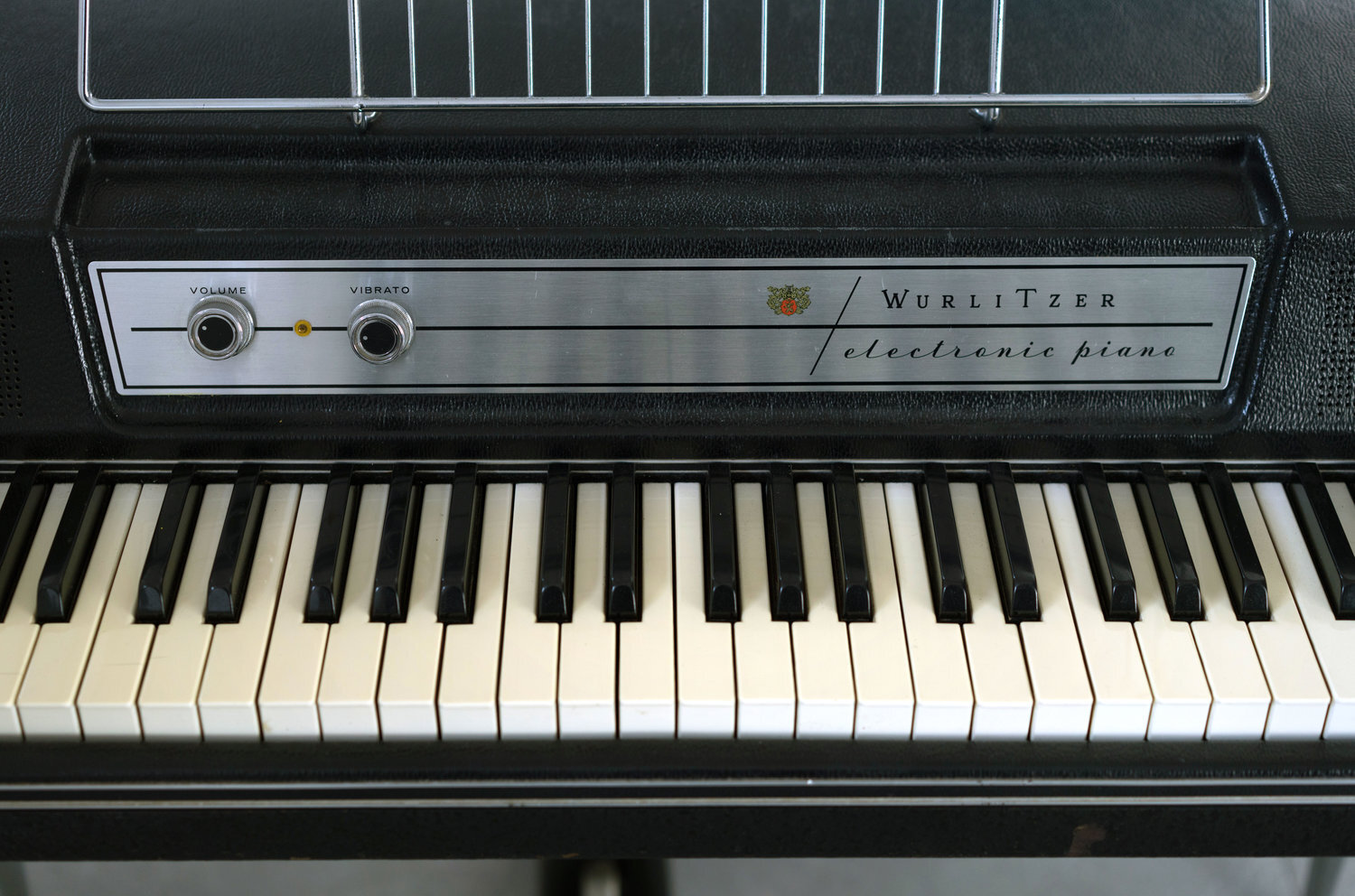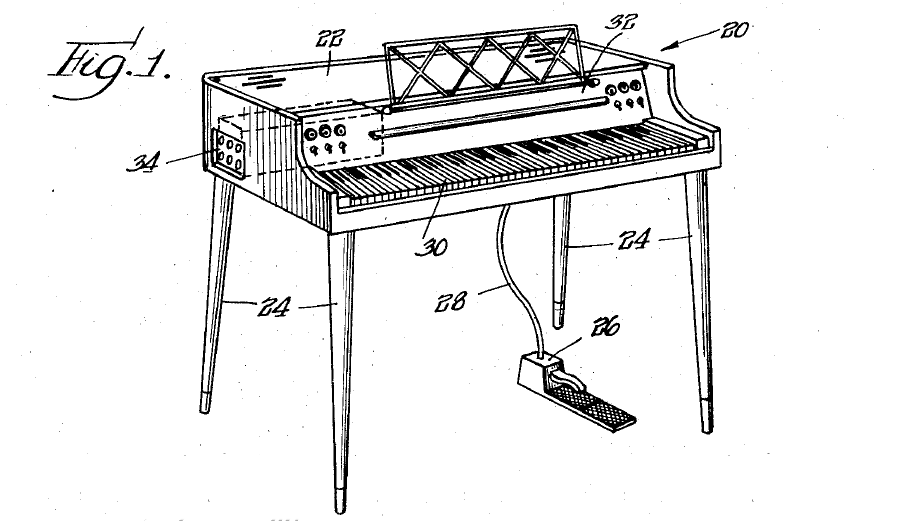In Restoration: Wurlitzer 203w
We’re always very excited when we have a vintage Wurlitzer 203w in the shop. There are so many reasons why:
The casters. They are amazing. The Wurlitzer itself has this space-age plastic top, but the casters are more old-fashioned: vaguely Victorian-looking, actually. They really are the cherry on top of the retro-futuristic look of the keyboard. Not every console 200/200a has casters. They’re cool with or without casters, of course, but the casters definitely add style points.
Giving the casters another bullet point. Console Wurlitzers are heavy, and when you pick them up, all the weight is actually on your fingertips because they have no handholds. However, if you have to — for instance — lift it in and out of a van, you can actually pick it up by the casters. It’s like a secret emergency handle.
The mobility (which is another way of saying “the casters,” I suppose). You obviously can’t wear it like a backpack and take it everywhere you go. But you can definitely nudge it around the studio whenever inspiration strikes. Sometimes, you will want to wheel it into the middle of the room, just to make full use of the two speakers in the back. With so many speakers, there’s a lot of room for experimentation with microphone position — and, thanks to its mobility, it plays well with other gear in a live recording session.
Four speakers. The 203w’s bass response is excellent. Overall, the 203w definitely achieves a bigger sound than you would get with the 200’s two oval speakers alone. You can, of course, connect an extension speaker of any size to a 200 (although you may need to add a jack to do so), but it still isn’t the same as playing a 203w. Console Wurlitzers like the 203w bring you closest to the conventional piano experience: the sound is full and rich and loud and it actually comes from the instrument that you are touching.
Early solid state amplifier. The 203w’s amp is in a historical sweet spot. It has a lot of vintage idiosyncrasy — carbon composition resistors, tropical fish capacitors, gigantic fragile circuit board — but it is not inordinately delicate. (In other words, it has no germanium transistors.) The 200a’s amplifier (found in consoles like the 210) was developed a few years later and is therefore a little more practical, but can sometimes sound slightly sterile in comparison.
This particular 203w was a single-owner keyboard. Because it was kept in a climate-controlled room for many years, its cosmetic condition is excellent and the mechanical parts are in great shape. It has exactly enough patina to remind you of its history, but is overall in beautiful condition. The tolex shows very little wear and the keys are bright: two aspects we always appreciate. The amplifier — which, despite its age, was still extremely usable — has that characteristic 200 timbre that we love. After routine cleaning and repair, this keyboard was ready for regular play once again.
One incredible detail about this 203w: the speaker cloth was in perfect condition. This is very rare, because people tend to damage it over the years, probably when reaching for the sustain pedal too aggressively. In that case, we are able to salvage the speaker cloth by removing it, repositioning it, and stapling it back into place. This is possible because, when they installed the speaker cloth in the first place, Wurlitzer left several inches of excess cloth around the sides. We are happy to do this because we love the original speaker cloth: it is thickly woven and reminds us of an old sweater (whereas speaker cloth on most later amps are more likely to remind us of an old placemat). However, there is only enough fabric to reposition it once, so if it rips again, the only option is to replace the speaker cloth entirely. So we are very happy to see the speaker cloth on this keyboard in such great shape — it is another little detail that shows how special this 203w is.
Further Reading
Browse all of our articles on restoring vintage gear. Or, click on an image below.


